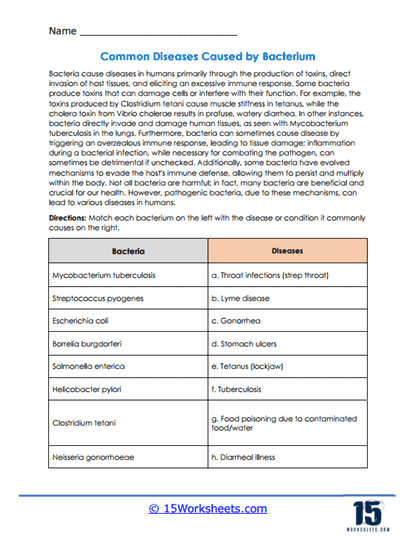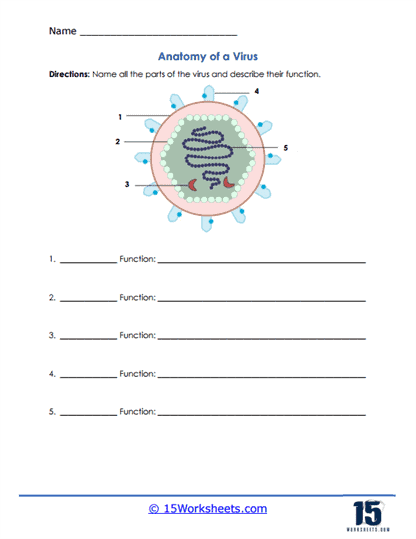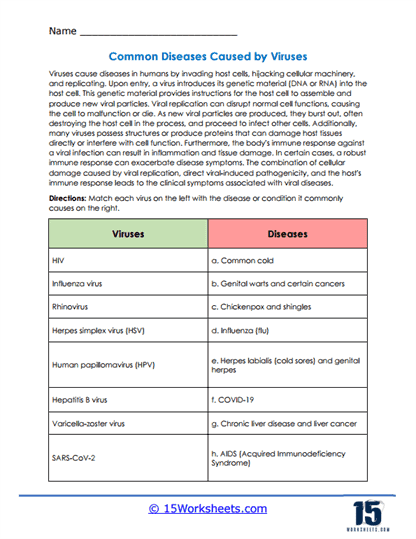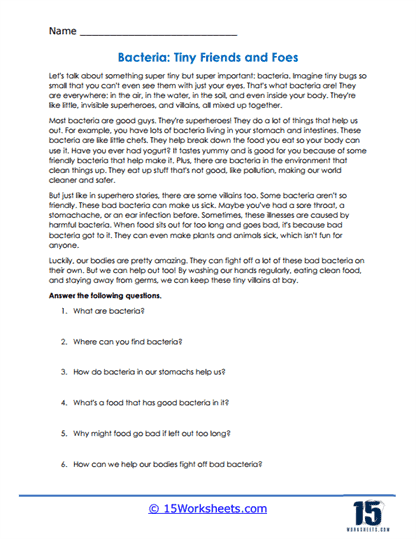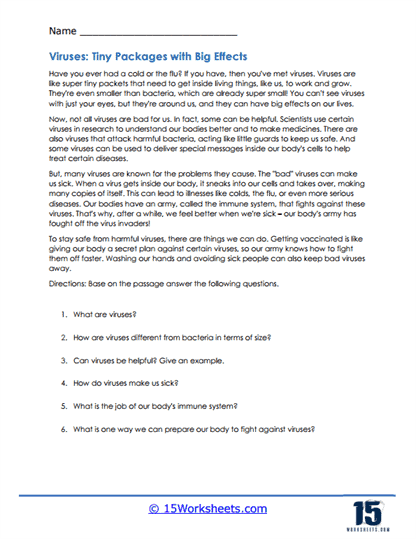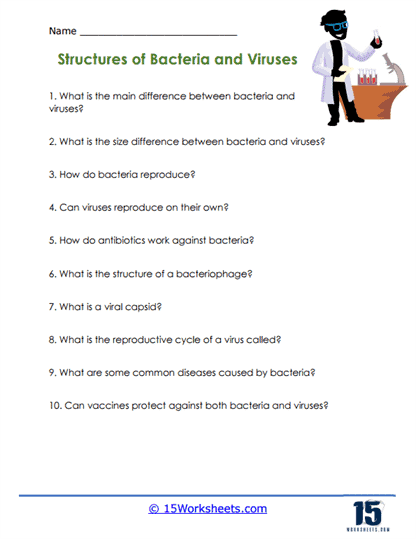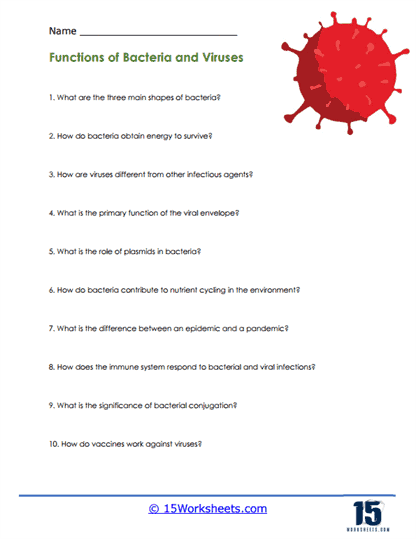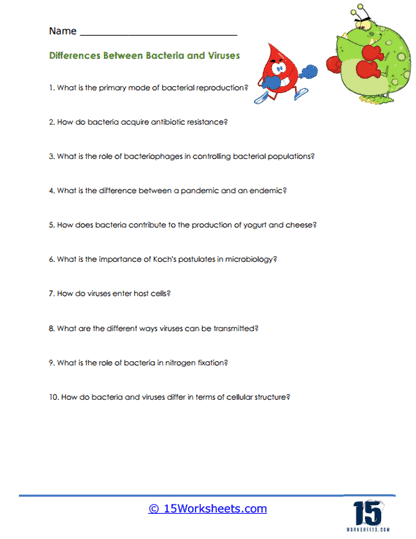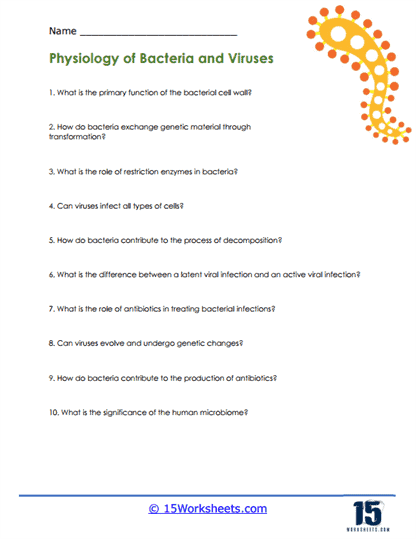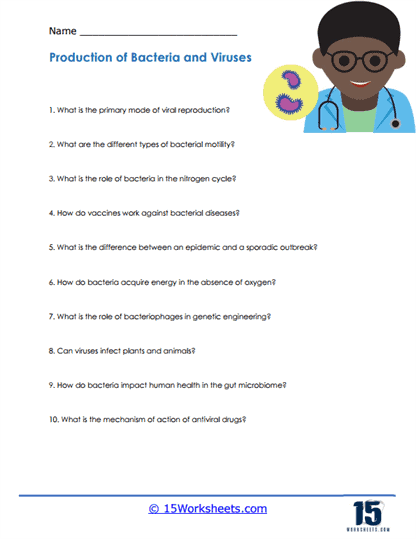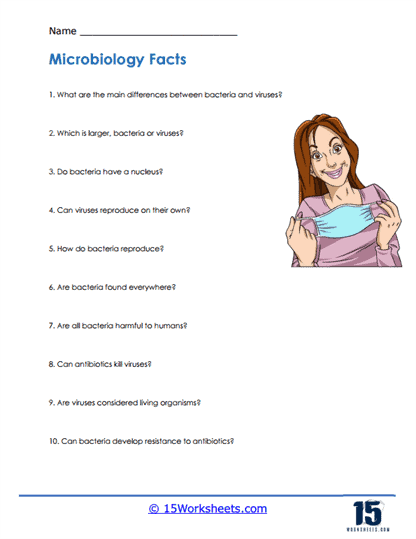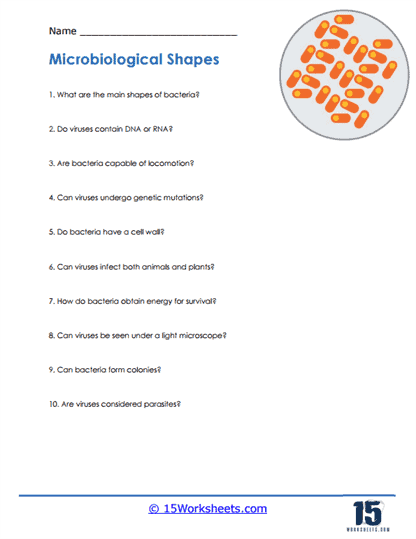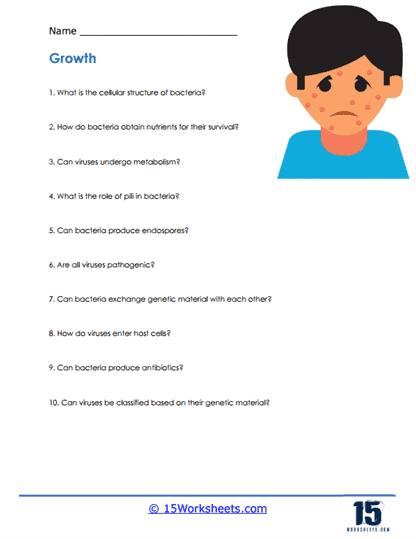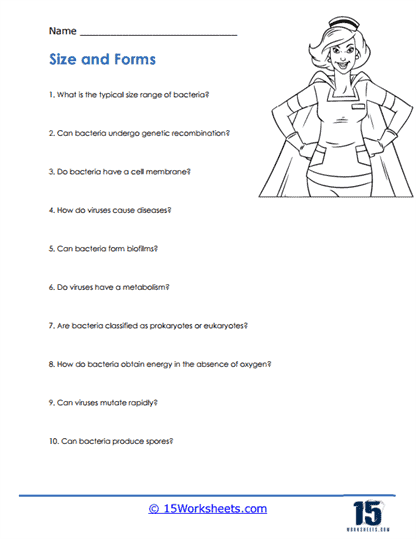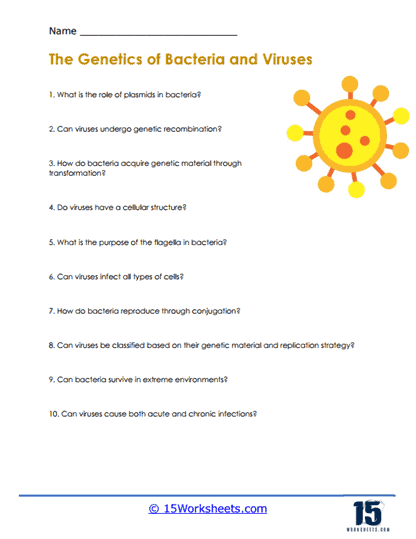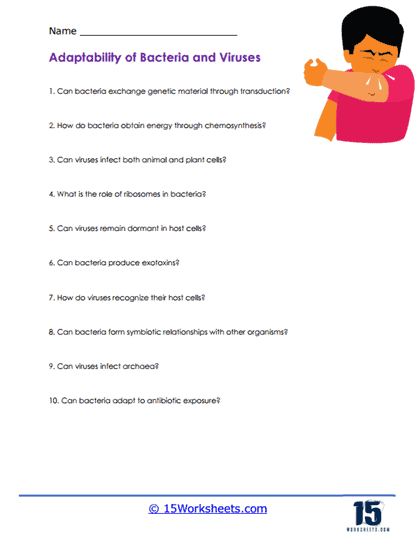Bacteria and Viruses Worksheets
About These 15 Worksheets
If you’re a teacher or homeschooler looking to make microbiology more engaging, this worksheet collection is your secret weapon. This series of 15 worksheets is designed to make the microscopic world of germs both educational and entertaining. Each worksheet is crafted to help students understand the structure, functions, and impacts of bacteria and viruses in a fun and interactive way.
The worksheets include a variety of activities such as labeling diagrams of bacterial and viral structures, matching pathogens to the diseases they cause, and reading comprehension exercises that delve into the roles these microorganisms play in our health and the environment. Students will explore how certain bacteria are essential for digestion and immune function, while others can cause illnesses like the flu or more serious infections. These exercises aim to instill critical thinking and scientific literacy, encouraging learners to apply their knowledge to real-world scenarios.
Beyond human health, the worksheets also shed light on the environmental significance of bacteria and viruses. For instance, students will learn about bacteria that decompose organic matter, recycling nutrients back into the environment, and those involved in nitrogen fixation, crucial for plant growth. The collection emphasizes the broader impact of these tiny organisms, helping students appreciate their roles in ecosystems across the planet.
Each worksheet is designed to target specific learning objectives related to microbiology, with an emphasis on vocabulary building, matching activities, and short-answer questions. The series encourages students to engage with visual representations of microorganisms, interpret diagrams, and comprehend biological processes related to both bacteria and viruses.
In a world where “eww” meets “aha!”, our Bacteria and Viruses worksheet collection transforms the squirm-worthy into the seriously fascinating. This isn’t just a set of printables-it’s a full-blown educational toolkit designed to help teachers and homeschoolers turn tiny terror tales into teachable moments. Packed with diagram labeling, matching games, reading comprehension, and critical thinking challenges, these worksheets don’t just teach science-they spark curiosity, provoke questions, and inspire future germ-fighting superheroes. Whether you’re trying to explain how bacteria help us digest lunch or how viruses hijack cells like sneaky little invaders, this collection brings the microscopic world into sharp (and surprisingly entertaining) focus. It’s science made simple, engaging, and just gross enough to keep kids coming back for more.
What These Worksheets Help Students Learn
This worksheet collection helps students understand what bacteria and viruses are, what they do, and how they affect living things. Each activity is designed to meet specific science goals, with a focus on vocabulary, diagram labeling, matching exercises, and short-answer questions. The worksheets use pictures and diagrams to help students visualize and better understand how these tiny organisms work.
Learning About Microorganism Structures
One big focus is helping students learn the parts of bacteria and viruses. They’ll label diagrams and explain what each part does. This not only helps them learn microbiology terms but also builds a stronger connection between what they see in a picture and what happens in real life-like how bacteria move or how viruses infect cells.
Connecting Pathogens to Diseases
Another key skill these worksheets build is helping students recognize which bacteria or viruses cause certain diseases. In matching activities, they’ll pair microbes with the illnesses they cause (like matching the flu with the influenza virus). This helps them remember important information and understand how germs affect health-great for laying the foundation for topics like disease prevention and public health.
Building Critical Thinking Skills
These worksheets also encourage students to think more deeply. They’ll answer questions that ask them to compare bacteria and viruses, explain how they reproduce, and even explore advanced ideas like antibiotic resistance. These exercises go beyond memorization and help students truly understand how microorganisms behave.
Supporting Reading and Science at the Same Time
The worksheets boost reading skills through science-based reading passages. Students read short texts about bacteria and viruses, then answer questions that test their understanding. This strengthens both literacy and science knowledge at the same time-making it a win-win for any classroom or homeschool setting.
Understanding What Bacteria and Viruses Are
Bacteria and viruses are like the odd couple of the microscopic world-both uninvited guests in your body, but each showing up with dramatically different party tricks. Bacteria are living organisms that can reproduce all on their own, given the right conditions. Think of them as the overly independent roommates who bring their own groceries, cook their own meals, and sometimes even clean up after themselves (shoutout to the good bacteria in your gut!). Viruses, on the other hand, are freeloaders of the highest order. They can’t do a thing without hijacking your cells. They’re like that cousin who shows up, raids your fridge, steals your Wi-Fi, and then somehow turns your own TV against you.
Despite their differences, viruses and bacteria do share a few things in common-mainly the fact that both can make you sick and really ruin your week. They’re microscopic, which means you can’t see them without a serious zoom lens, and both can spread faster than spoilers on the internet. They also both trigger your immune system into full-on defense mode, like a molecular fire drill where everyone’s trying to stop the spread before your body becomes ground zero for GermFest 2025. But while antibiotics can usually take care of bacteria (think of it as eviction paperwork for a bad tenant), viruses laugh in the face of antibiotics and require a whole different approach-often vaccines or just good ol’ rest and regret.
Perhaps the biggest difference comes down to lifestyle. Bacteria are fully equipped single-celled organisms-they eat, move, reproduce, and in some cases, even help humans out (we see you, yogurt bacteria). Viruses? They’re more like molecular zombies. Not really alive by most definitions, and only active when they’ve infected a host. They’re minimalists, carrying just enough genetic material to turn your cells into virus-making factories. In short, bacteria might throw a wild party in your body-but viruses will move in, redecorate, and install their own DJ booth in your cells. Both are fascinating, both are terrifying, and both are a great reminder to wash your hands.


